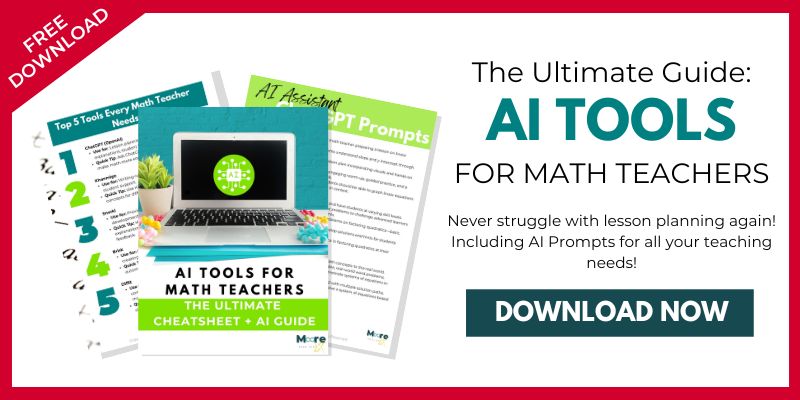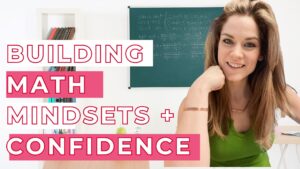AI-Powered Practice Tool that Builds Deeper Understanding
Wondering what are the best AI tools for the math classroom? That’s a question I’ve been exploring all year—and I finally found one that’s an absolute game-changer. Picture this: your students tackling one of the toughest topics (trigonometric graphs!) and instead of shutting down, they’re engaged, persistent, and collaborating like never before. That’s exactly what happened when I introduced Snorkl to my class.
I couldn’t believe what I was seeing:
- Students revising their work again and again to get it right
- Precise academic vocabulary flying around the room
- Instant feedback turning confusion into real understanding
Snorkl didn’t just make practice easier—it transformed learning.
In this week’s episode of The Modern Math Teacher Podcast, I’m sharing how Snorkl rose to the top of my list when I asked: what are the best AI tools for meaningful math practice? Plus, I’m giving you actionable tips to bring this AI magic into your own classroom.
👉 Watch here: Watch on YouTube
🎧 Listen here: In your Favorite Podcast App
Why I Chose Snorkl
I first heard about Snorkl on an education podcast and was intrigued by its promise: AI-powered feedback that strengthens student reasoning. As I researched what are the best AI tools for classroom use, Snorkl stood out. I began sharing it in my AI trainings through the Bureau of Educational Research, and teachers were hooked. I knew I had to test it with my own students.
When we reached our unit on graphing trig functions, I found a Snorkl activity that fit perfectly. Graphing sine and cosine waves can be daunting, even for strong students. I was hopeful—but what happened exceeded my expectations.
What Happened in My Classroom
I asked students to write equations for sine wave graphs and explain their reasoning. Using Snorkl, they submitted their responses and received instant feedback.
Here’s what happened next:
- Students began asking each other questions without any prompting.
- They used precise mathematical language naturally.
- Persistence went through the roof. Students who normally gave up kept revising until they succeeded.
- Collaboration blossomed. They compared responses, spotted errors, and built understanding together.
Their depth of understanding grew before my eyes. They made new connections between amplitude, midlines, and vertical shifts—insights I hadn’t seen before in my years of teaching.
Why It Worked
So why does Snorkl rank so high when I think about what are the best AI tools for the classroom? Here’s what I saw:
✅ Immediate Feedback: No waiting—they knew right away if they were on track.
✅ Encourages Revision: Students learned that mistakes are steps toward mastery.
✅ Deepens Discussions: Prompts and feedback sparked authentic math talk.
✅ Builds Confidence: Quick wins (and clear next steps) kept students motivated.
How You Can Use Snorkl
If you’re wondering what are the best AI tools to try next, Snorkl is at the top of my recommendation list. Here’s how to get started:
1️⃣ Pick one topic you’re teaching now and search Snorkl’s activity library.
2️⃣ Prep your students: Tell them revision is part of the process.
3️⃣ Allow discussion time: Give 15–25 minutes for students to reflect and collaborate.
4️⃣ Try it for:
- Graphing
- Solving equations
- Explaining reasoning
Consider rewarding persistence or clarity of explanation to encourage deep engagement.
Final Thoughts
In my quest to answer what are the best AI tools for math classrooms, Snorkl has been a standout success. It didn’t just help my students practice—it helped them grow into confident mathematical thinkers. If you’re ready to explore AI tools that truly enhance learning, start here.
See 11 Reasons why Every Math Teacher Needs AI in the Classroom Now
👉 Download my free AI Guide for Math Teachers for more insights on Snorkl and other top tools that make planning and teaching easier and more effective.
Have you tried Snorkl yet? Drop a comment or tag me on social to share your experience.
Keep experimenting, keep collaborating, and as always—keep it real.










